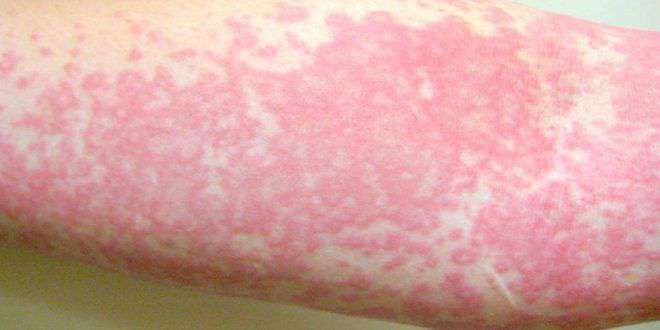Contents
Bromine allergy: symptom and treatment
Used to disinfect swimming pool water, bromine is an interesting alternative to chlorine because it is less irritating and better tolerated by the majority of people. But although rare, allergy to bromine does exist. It is part of class 4 allergies, also called delayed allergies. What are the symptoms ? Is there a treatment? The answers of Dr Julien Cottet, allergist doctor.
What is bromine?
Bromine is a chemical element of the halogen family. It is used to kill bacteria and germs in swimming pools. “Bromine is much more effective than chlorine” explains Dr Julien Cottet “More disinfectant, it is at the same time bactericidal, fungicidal and virucidal. It is also more resistant to heat and alkaline environments and is more UV stable ”. But more expensive than chlorine, it is still very little used in swimming pools in France.
Bromine is also used as a water purifier, so it can be found in drinking water, but almost never in high enough concentration to cause an allergy.
Causes of bromine allergy
There are no known causes, nor a typical profile of people allergic to bromine.
“However, as with all respiratory and skin allergies, patients with atopic dermatitis are at greater risk” specifies the allergist. Likewise, overexposure to any allergen increases the risk of developing an allergy.
Symptoms of bromine allergy
Symptoms of bromine allergy can vary depending on the severity of the allergy and the bromine level in the water. There are two types of bromine allergy symptoms.
Skin symptoms
They occur several minutes after swimming and can be:
- Dry skin, known as xerosis,
- Eczema patches with scaling,
- Itches,
- Crevices,
- Conjunctivitis,
- Redness.
Respiratory symptoms
They occur more quickly, often during swimming:
- Rhinitis,
- Cough,
- Whistling,
- Chest tightness,
- Difficulty breathing.
In the presence of one or more of these symptoms after swimming in a swimming pool treated with bromine, it is essential to make an appointment with an allergist in order to verify the diagnosis.
Bromine Allergy Treatments
There is no treatment for bromine allergy. “Only eviction can improve the situation” concludes the allergist.
Alternative solutions to the use of bromine
To limit allergic reactions to bromine, it is necessary to maintain your swimming pool perfectly, the dangers of bromine being mainly linked to its overdose. “The bromine concentration must be monitored regularly and never exceed 5 mg per liter of water” insists Dr Cottet.
Whenever possible, it is desirable to avoid swimming in bromine treated pools.
If in doubt about the water treatment used: when leaving the pool, it is essential to shower and wash thoroughly with soap-free washing oil. “Bromine is much more difficult to remove than chlorine” specifies the allergist.
The patient can then hydrate the skin with emollients and in case of eczema plaque, he can use topical corticosteroid creams.
Swimsuits should also be machine washed thoroughly to remove all traces of bromine.










